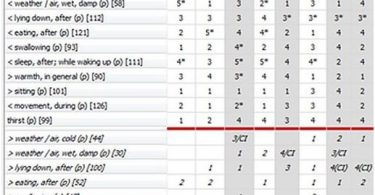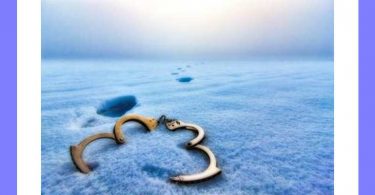At a regular monthly meeting of the Society held on May 11th, 1876, A.R.Thomas, M.D. President, being in the chair, the following interesting papers were read by E.A.Farrington M.D.: ” Do medicines make functional changes? Being a reply to an article of Dr. Lippe in the May number of the Medical Advance, entitled, “The last departure of Homoeopathy in the Physiological Livery,”and by Pemberton Dudley, M.D. “On the Cimex Question.”
In the May number of Medical Advance, Dr. Lippe contributed an article ” The last Departure of Homoeopathy in the Physiological Livery.”
So far as the charges preferred in this article apply to me personally, they demand no reply. But so far as they compromise the integrity of the college in which I hold my professorship, I am bound to inter the contest in her defence.
In the early part of the winter. I issued syllabus containing some questions, arranged in sections. These questions comprised a good portion of the Materia Medica, certainly such portions, as the beginning practitioner ought to thoroughly understand before he commences the practice of medicine.
To this syllabus Dr. Lippe raises several objections, Viz:-
First, he considers that it reaches Schusslerism;
Secondly, that it is contrary to the teachings of Hahnemann;
Thirdly, that it is false because the answers to many of the proposed questions are impossible -can not be true.
The words, which seem especially obnoxious to him, are these: ” The intelligent application of Materia Medica requires the knowledge of the changes medicines make in functions and nutrition.” For example, I asked, ” What changes does Lachesis make in the blood?” This Dr. Lippe terms Schusslerism. He asserts, and misapplies Hahnemann to confirm his argument that it is impossible to know what changes medicines make in function and nutrition.
The reply to his argument comprises three questions:-
First, what is Schusslerism?
Secondly, can we learn what changes medicines make in functional and nutrition?
Thirdly, if he can, of what uses such information in the application of drugs?
First, if Schusslerism means the law, which Dr. Hering discovered some thirty years ago, then I plead guilty to the charge. If it means floundering about with untried remedies, basing their symptomatology on their supposed physiological action, making a cure all of twelve substances—then I most emphatically deny the charge. Every question propounded in the syllabus is answered either from provings or from clinical experience. If Schusslerism means that medical substance act on tissues producing changes in function and nutrition, then again must I plead guilty.
And this brings us to second question, upon the solution of which depends the maintenance of any position. A function is, literally, an act, a performance, and applied to physiology,” is the action of an organ or set of organs” (Dunglison). If I take a drug and symptoms result, are not these the expression of altered functions—altered in degree or quality? If, for instance, Lachesis causes hemorrhages with a settling like charred straw (Guernsey), or if it causes profuse bleeding, the blood will not coagulate (Lippe): is this not a nutritive change? And will this altered blood perform its normal functions? Let the answer be found in the gangrene, the erysipelas, or the impending typhoid state.
Were Dr. Lippe to ask how are the changes made I would be compelled to answer, I know not. The secret working vital force under infinite surveillance. Just how it works, mortal man may never know. We live in a world of effects, and it is only of these we can become cognizant.
The blood propelled by the heart, sweeps over the aortic arch and down the aorta, never dispensing its gifts until it reaches its ultimata in the capillaries. Nerves run to and from centers, giving no impressions until their termini are reached. The ulna, irritated at the elbow, tingles at its termination in little and outer side of ring fingers. So with every vital effort, it is in its fullness only when terminated in its appointed organ or organs.
Organs are made of tissues, tissues of molecules, and herein are consummated the complex vital phenomena which make up the life. As Hahnemann says, the internal changes we can not determine. But their effects,which appear normally in conscious sensation and motion, and abnormally in symptoms, are determinable. Whether these symptoms are subjective or objective, they express a change in function or nutrition, and bespeak the tissue or tissues involved.
If a function is truly defined above, will not the symptoms show a changed” action of an organ or set of organs?”
If I take a remedy, say Rhus,and it produces a vesicular eruption, will it be denied that a change in nutrition has taken place? And can not we perceive what change has taken place?. Or, still more to the point, if for a non-uniting fracture we prescribe Calcarea Phos, and the callus quickly forms— a callus containing a hundred-fold more time then we give— can we deny a tissue and a nutritive action?
We know that tearing, boring pains indicate an affection of bones or periosteum; that sharp, shooting pains indicate an affection of serous membranes. We know that Aconite acts on serous sacs, increasing their suction; while Sepia, Iodine, etc, relax serous and synovial sacs.
Equally sure are we that Hypericum acts on nerve tissue, Arnica on the capillaries, Mercury in the production and Silicia in the prevention of pus formation, Conium on adenoid tissue, Graphites in the dissolution of cicatricial tissue, Creosote on the mucous lining of the stomach,Silicia, Chamomilla, Bryonia, on connective tissue, Ferrum on the haematin, Phosphorus on the blood cells, and so on through the Materia Medica.
But thirdly, are such facts of use in the application of Materia Medica? True, a physician may cure the Lachesis haemorrhage without any other information then the mere words of the symptoms. But so long as man finds delight in the exercise of his God-given reason, he will demand the why —the why which anticipates every truth— the why which led to Hahnemann’s quinine experiments, and to every succeeding step in his discovery of Homoeopathy.
No physician can intelligently apply medicines with simply a memorized materia medica. He is then like the industrious student who, in his attempt to learn French, memorized the dictionary but learned nothing of grammatical construction. Neither can the physician always succeed in obtaning the necessary totality of symptoms without an intimate knowledge of functional perversions. He must know from physiology what are the normal relations of organ with organ; from pathology what changes diseases cause; from the history of diseases what are their probable course, duration and result For example, delirium, photo-mania, singing, praying, making verses, will yield to Stramonium; but the same symptoms with retained placenta, demand Scale. Neuralgia in and over the left eye may yield to Spigelia, but if a titled uterus exist, even though there are no subjective pelvic symptoms, the remedy will be Actaea Rac.
Gross in his “Comparative Materia Medica” gives as a symptom of Apis, “suppuratins do not occure”. Why? Virchow tells us that the production of pus demands an inflammation of the parenchyma. Apis only attacks surfaces, hence it seldom forms pus. The utility of this Characteristic is evident in contrasting the remedy with Belladona, tonsils bright red, swollen threatening suppurtion.
If a patient passes urine deposting reddish sand, are we damaging Homoeopathy if we search for the cause of this defective oxygenation of nitrogenous matter? On the contrary, will not the revealed symptoms help to complete the totality, and so help us to diagnose between Lycopod; Natrum Mur; Ant. Crud, etc, all of which have such a urinary deposit?
If a newly proved drug causes white, flocculent urine, are we violating the precepts of the Master if we analyze this excretion and, finding phosphates in excess trace thence the relation of other symptoms produced? Let it be remembered, however, that symptoms have a relative value; and although we may make use of every known means in analyzing a case and collecting the totality of its symptoms, we must arrange our picture according to the well tried rules of Organon.
The true physician, while he holds fast to the precepts of Hahnemann, neglects no fact, which a progressive science might utilize, no discovery, which bears the stamp of truth. If the new discovery contradicts his well-confirmed laws—his creed it may be called—it must be false, for truth can not invalidate truth.
DISCUSSION
Dr.Jeanes agreed with Dr.Farrington, that in order to understand that which is abnormal, it is necessary to be acquainted with what is normal; and with Dr. Dudley, that disgusting remedies should not be introduced into our Materia Medica. The individual physician may experiment with them if he wishes, but they need not be put into our works. He had no doubt that many uncertain symptoms had crept into our materia medica, but he thought these could generally be traced to the recording of clinical symptoms with the results of provings; especially in the case of alterations in nutrition. Graphites, for example, was said to exert an influence on cicatricial tissue, but it had never produced it. As to the twelve tissue remedies, he was opposed to them as being against the priniciples of Homoeopathy.
Dr. Korndoerfer would not like to go without the (potentized) bed bug in his pocket-case. He had once succeeded in removing the symptom, “violent shooting pain along from va-gina up towards left ovary, which had lasted six months”, within one hour by one dose of Cimex 30. Ought we to be willing to sacrifice a remedy that can produce such a result? We already use the Spanish fly and Musk, which are hardly less disgusting than the Cimex. He did not approve of searching for new remedies of this kind, but we ought not to give up a good thing because it seems dirty. We should not be hypersensitive; if such things are real curative agents, that fact, and that only, should govern our action towards them.
Dr.Farrington said, in answer to Dr. Jeanes remark in reference to Graphites, that of course it could never caused cicatricial tissue, but it had caused induration of cellular tissue, which so nearly resembles it that it gave the basis of comparison.
He was sorry to have to disagree entirely with Dr. Dudley. He would not be willing to throw Psorinum to dogs, his own experience with it had been too valuable; nor yet Variolinum, however disgusting their origin may appear. Nor would he wish to abandon the Cimex. In his opinion, the laity had nothing at all to do with the names of our remedies, nor with the substances used; and when potentized these all taste alike.
As to the unreliability of reported verifications of acute symptoms, spoken of by Dr. Dudley in his paper, we have no means of testing whether a group of symptoms has disappeared of it, or has been removed by our remedy. If left to nature, the symptoms run a certain known course, and disappear in a certain order; whereas, the proper Homoeopathic remedy will prevent this course, and cause the symptoms to disappear in a contrary order. For example, in a case of poisoning by Rhus, the vesicular eruption will spread in a certain direction. If, after the use of Croton Tig, we find that the course is stopped, and the advanced stages begin to fade first; not those that first appeared, as would be the case it left to nature we may be sure that our remedy has done the work and not nature.
Dr, Dudley used to think himself a sort of pariah, a medical outcast, who agreed with no one, and with whom no one agreed except in adopting the law of similars; but he was glad to find that at least in one other point he could agree with Drs.Farrington and Korndoerfer. Dr. Korndoerfer, in his paper last month, has said that the Homoeopathic remedy is not that one whose symptoms can be patched together, so as to agree with the symptoms of disease. He certainly is correct in that. This evening, Dr. Farrington had carried same idea a step further, and has maintained that an acquaintance with the functional changes produced by our remedies is not possible, but necessary to an intelligent use of them.
The use of Spanish fly and of Musk does not, in his opinion, justify the use of Cimex, and the other disgusting remedies to which he referred in his paper. His argument against them is based upon the popular disgust; whereas, in the case of other substances mentioned by Dr, Korndoerfer, there is no popular disgust; fashion has sanctioned their use. What can we think of that physician who goes to the lowest cesspools in search of his remedies? He, for his part, would not judge such a man worthy of credence. If driven by necessity, and there was nothing else left, he supposed he would use such remedies too, but only as a last resort.
Dr. Korndoerfer did not wish to be understood as advocating these lowest remedies; and yet, why they should not be used? No doubt many others and we have madeinvoluntry provings of Cimex;but Dr.Wahle of Rome felt warranted in making a voluntary proving of it, which has certainly been productive of some good. What can be nastier than Psorinum; and yet he would not wish to be without it. In the case of a little child with a dirty looking eruption of its scalp, and an indescribably disagreeable smell from the person in spite of the greatest care, Psorinum cured in a week; and the same remedy also removed ugly pustules from around the finger nails of the mother, within the same time. Such an experience certainly ought to induce us to hold fast to the remedy.
Dr. Farrington would like to ask two questions;
(1) What would Dr. Dudley do, if driven by necessity, he really wanted such a remedy? Ought he not to be able to find it somewhere, for example, in just a work as Allen’s Encyclopaedia?
(2) Does anybody know any remedy that had horribly offensive black waterly stools at night? He had met stools of such a kind in many cases of cholera infantum, and the children had been cured by Psorinum, Should they have been sacrificed, because Psorinum is nasty?
Dr. Dudley answered the first question by saying, that if Cimex were not recorded, probably some better drug would be; and, if a case occurred in which this other drug could not help, there would be many others where it would, and Cimex would not.
Dr. Korndoerfer reminded him by the proving of Cimex, one remedy was added, and it did not interfere with the introduction of another.
Dr. Jeanes: In olden times the Homoeopathic physician was contended with about 80 remedies; and now from 800 to 1000 have been experimented with; and this is not the one-millionth part of the substances which can operate upon the human system to change its action.
Dr. Dudley said chemistry could furnish any number of drugs, and potent ones, if we were in need of new remedies.
Dr. Farrington: True; but we must not forget that there exist differences between substances of the animal, vegetable, and mineral kingdoms, which are not represented by a difference in their chemical formulae.
Dr. Korndoerfer stated an incidence that proved there was a difference between the action of the Phosphate of lime, derived from the mineral kingdom,and taken from the animal.
Dr. A.R.Thomos had seen in the journal of the College of Pharmacy, some five years ago, a detailed method for the preparation and administration of the ” measuring worm”, and a method for extracting therefrom a crystalline substance. He did not think, then, that the old school could sneer at us on account of some substances found in our materia medica, as they are in the habit of doing.
The Society then adjourned.






